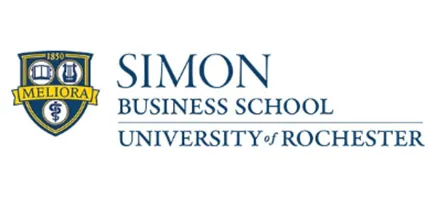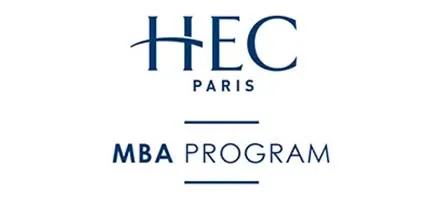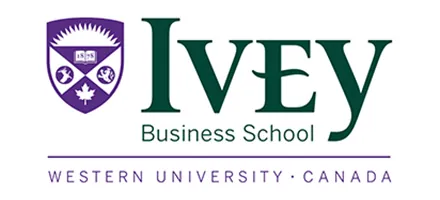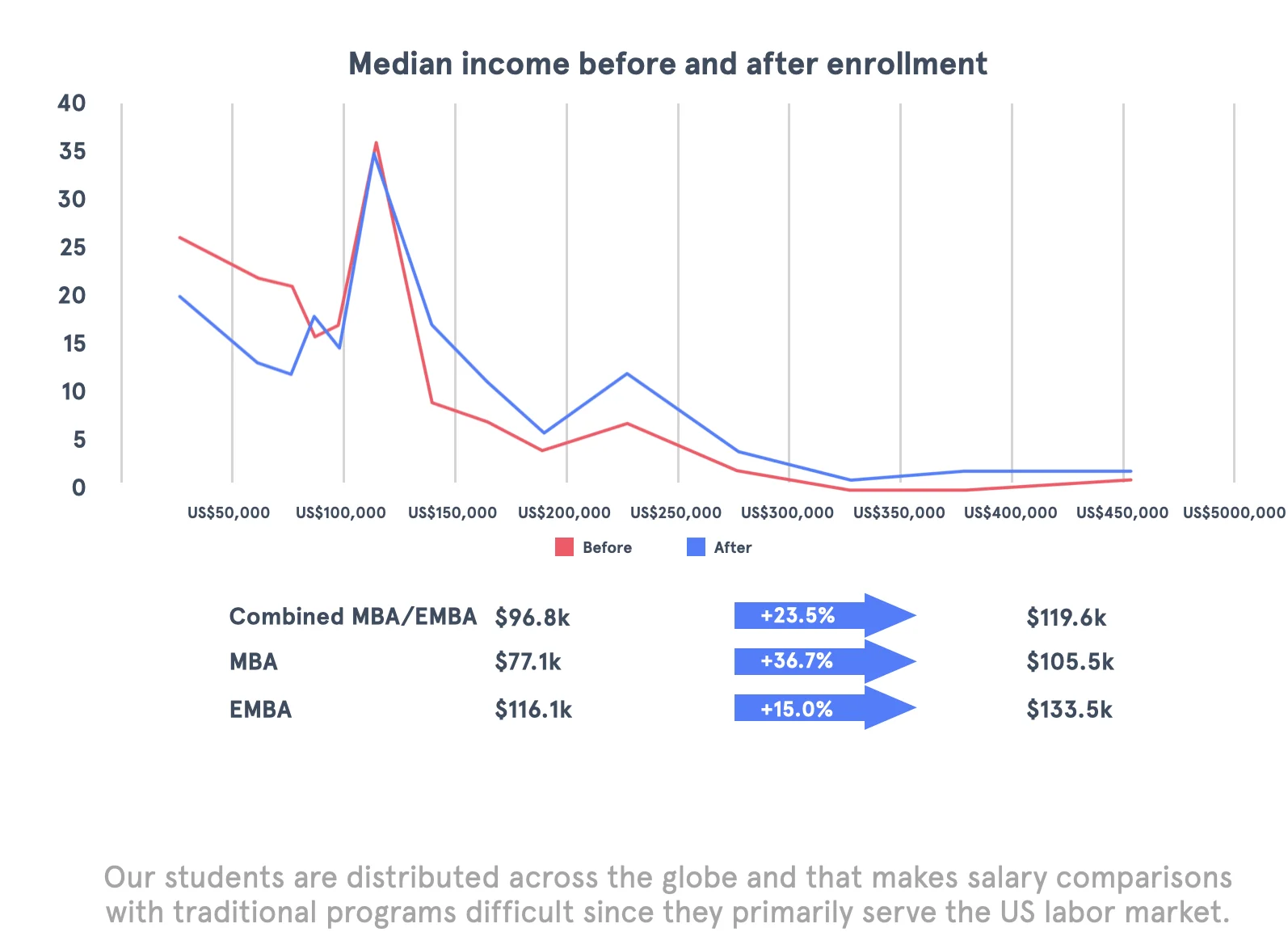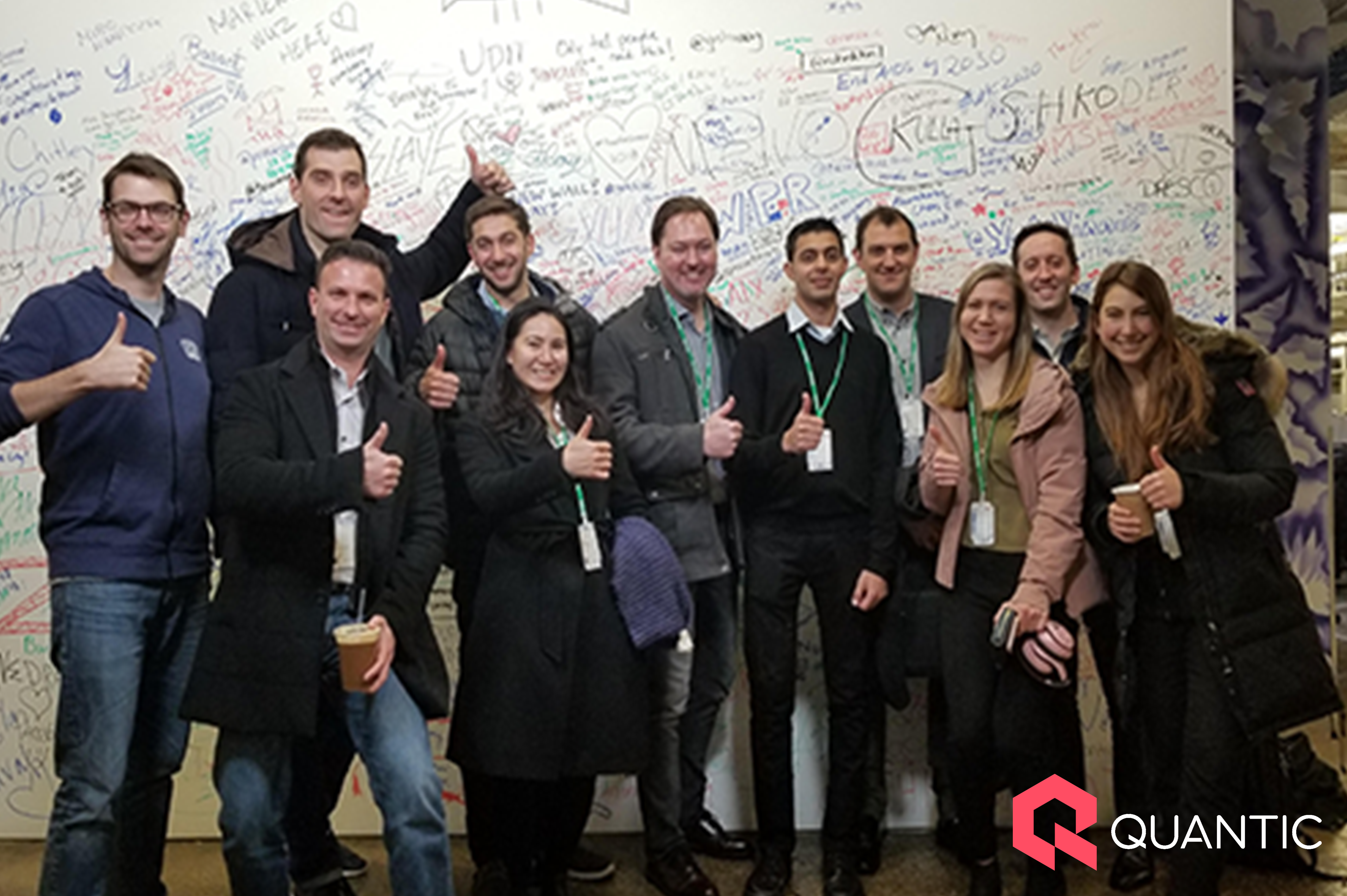
Quantic Student Event
“EMBRACE CHANGE”
Business school is just one of the transitions that Kate Jumeaux has made over the past year. A water sports aficionado from Australia, Jumeaux not only switched sides of the continent, she also moved from finance to project management. Thus far, Quantic programming has reinforced a key lesson from this shift: Comfort is costly.
“The traditional methods aren’t always the best. It’s important to embrace changes and do things differently, such as the way this MBA is being run.”
By that, Jumeaux means that she can move at her pace at Quantic and start learning about her interests earlier. “The lessons are continually growing and updated. The fact that Quantic students are lucky enough to have access to this information even after graduation effectively allows me to continue to learn. With the rate at which our world is changing, having access to updated and relevant information is incredibly important to ensure we are well informed and educated in respective matters.”
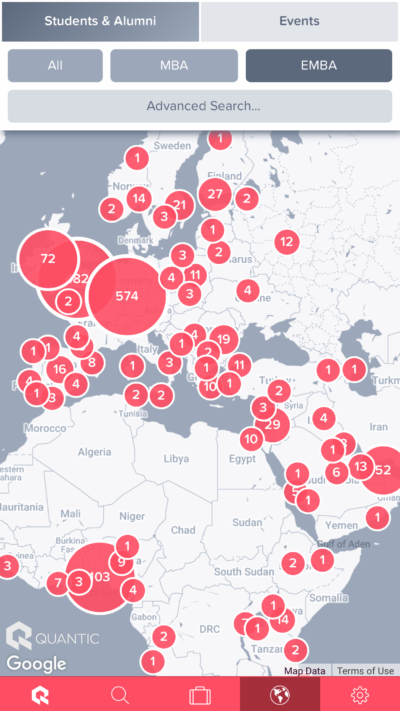
Student alumni network: Europe and Africa
A CLASS PROFILE
The Quantic MBA is divided into eight cohorts per year, which are enrolled on a rolling basis. Looking at the two cohorts set to graduate between January 1 and June 30 of 2022, Quantic received 8,054 applications and ultimately enrolled 240 students per cohort. From these two cohorts, 77% hailed from United States — and 55 countries specifically. Women accounted for 35% of these MBA students. One unique wrinkle in Quantic’s admissions process: the school doesn’t collect data on GMATs, GPAs, and GREs, as they are not required for admission.
Academically, the class has earned undergraduate degrees at institutions like Harvard, Oxford, MIT, and Georgetown. The largest segment in these cohorts majored in Engineering as undergraduates. They represent a 19% share of MBAs graduating in the first six months of 2022. Accounting and Finance majors make up 11% of the class, followed by Science and Chemistry (9%), Business and Management (8%), Biomedicine and Medicine (8%), Economics (6%), Marketing and Communications (5%), Computer Science (5%) and Political Science (4%). Another quarter of the class majored in fields outside these categories.
Looking at professional experience, 87% of this class has spent 2-6 years in various industries. Their employers include blue chips like Accenture, General Electric, Nike, and Facebook. 24% of the cohort last worked in Technology, with Finance (13%), Consulting (11%), and Healthcare (11%) also cracking double digits. The rest of the class is broken into Nonprofit (8%), Energy (6%), Manufacturing (5%), and Education (5%). Another 17% of the class fell into other industry segments.
A Q&A WITH QUANTIC CHAIRMAN TOM ADAMS
How does Quantic keep tuition low? How does the school’s platform and programming differ from business school incumbents? What types of results have Quantic alumni enjoyed in their careers? In August, P&Q posed these questions (and a few more) to Tom Adams, co-founder and chairman of Quantic. Here are his responses on what makes Quantic such a game-changer in the graduate business space.
P&Q: You describe Quantic as the “business school of the future.” What are two areas where you completely upend the educational status quo and how have they given you an advantage?
TA: “For years, online education has relied on the video professor, and we’ve upended this model, drawing inspiration from the best in experiential pedagogy within location based models. Our students join a community of similarly accomplished peers that they can learn from, and our active learning approach has made online learning more engaging, and effective. The ROI is exceedingly high, given the high quality of the curriculum and network, paired with radically low tuition costs and the fact that employers have come to understand the caliber of graduates we produce.
Online education has been passive and with no cohesive learning community. The majority of providers have taken the lecture and put it in video format, resulting in a low quality and lonely learning experience. And, they’ve failed to create peer-based learning communities, so therefore students learning online have had no community to speak of.

Tom Adams, founder and CEO of Quantic.
P&Q: Talk to us about your “active learning” method and “interactive software.” Give us examples of how they work when it comes to “bite-sized lessons” and “individual feedback.” How does the method and delivery enrich student learning and provide an advantage of traditional classroom and online learning models.
TA: “Think about the traditional, lecture-based learning experience. Students sit through a lecture (broadcast), then they are tasked with exams and exercises that quiz them on what they’ve learned. It’s passive and isolating, and these aspects are even more pronounced in online programs. Compare this to our model: students work through a self-paced interactive curriculum where they’re prompted to engage about every 8 seconds, and given constant feedback on their responses. They master skills as they go. Then, students put these new-found skills into practice in a collaborative environment, via group projects, discussions, and case studies. This format isn’t a far cry from the Case Method pioneered by HBS that includes solitary prep work before class, and subsequent discussions in class.”
P&Q: What types of career services does Quantic offer to help students enhance their positioning in the marketplace?
TA: “Quantic has a built-in career network that partially funds student tuition. We charge companies to access our network of students and alumni, which offsets tuition costs for students, and affords them greater access to new career opportunities. However, it should be noted that nearly all of Quantic’s students are gainfully employed. The magic in our programs is really in the skills students acquire — they help them get promoted or change careers or industries when they want to. Beyond this, we provide resume consultations and coaching to help prepare students to take on these bigger and better roles.
P&Q: You’ve mentioned a “powerful alumni network” in 150 countries. How do you leverage your alumni to open doors for Quantic MBA students?
TA: “To date, this has been happening completely organically. Because of how we effectively select an outstanding group of students, you end up with an alumni dynamic that’s comparable to the top residential programs in the world. Students and alumni connect virtually and in person at conferences and meet-ups, and an interactive network map allows them to based on interests, expertise, company, location, etc. Peers and alumni send thousands of messages to one another each cohort. We’ve even had students form start-ups together, and alumni who have hired other Quantic students and alumni.”

Phone App
P&Q: Tell us more about the network students join through Quantic.
TA: “For starters, our students and alumni work at some of the world’s top companies. Google, Amazon, and Apple number among the top employers our students/alumni work for. As we grow, we’re building more opportunities for alumni to get involved and give back to the Quantic community in the way of mentorship, job fairs, and networking events. We’re also excited to bring back our global conferences, which are fantastic networking opportunities for students and alumni. These weekend-long events are held in cities around the world several times a year. This year (pandemic permitting), we’ll have events in Washington, DC, Copenhagen, and Dubai, and next year we’ll add Seattle, Singapore, and Berlin to the list.”
P&Q: Quantic only selects roughly 5% of students who apply? What are 3 things that give some candidates a leg up over their peers and why are they important to you?
TA: “For this particular class, the acceptance rate was 6%. It’s an incredibly diverse network of people from all over the world, from different backgrounds and industries. We’re very intentional in how we build each cohort to ensure it’s a collaborative experience for those who are in it. We look for candidates with an orientation for impact — change makers, shapers, innovators — those with the drive to have a positive impact on the world. Candidates have a track record of success, whether it’s academic and professional. Lastly, we interview candidates and encourage them to sample the courseware to ensure our interactive teaching style is a fit for them. Ultimately, we want to make sure students are set up to succeed, and that means being a valuable contributor to their cohort and excelling within a rigorous curriculum.”
P&Q: Your website touts career-changing pay and promotions for graduates? Could you provide examples of two recent graduates who enjoyed a bump in status after earning their Quantic MBA? How did Quantic prepare them for this elevation?
TA: “Here are a few numbers to consider:
- 66% of Quantic students earn promotions within 6 months of graduating
- 80% say Quantic helped them get those promotions
- 95% say that upon graduating, they achieved the goals they set for themselves when they started.
- They see significant increases in salary.
- While most of our students aren’t that interested in changing jobs (more than 90% are employed full-time when enrolled and only 5% are actively looking), about half changed jobs or companies within 18 months of graduating.
- Changing jobs have helped them advance (40% change industry, 75% got a more senior role when they changed) and Quantic helped them get there (more than 2/3rds attribute the change to Quantic).
- Just another fun fact: around 9% of students founded a company while they were enrolled.”
Next Page: Profiles of 11 Quantic MBA Students.


